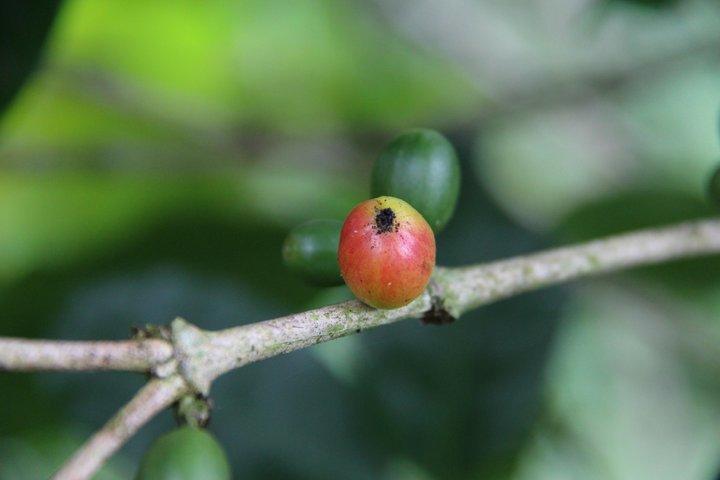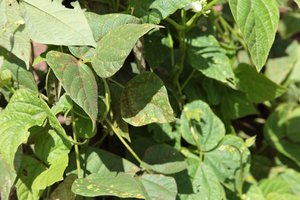Food systems for a sustainable future – interlinkages between biodiversity and agriculture

M. Ann Tutwiler, Director General, welcomes the newly published report from the recent 8th Trondheim Conference on Biodiversity, in particular, its recognition of the essential role that integrating biodiversity and ecosystem services plays in improving food systems and agricultural sustainability.
M. Ann Tutwiler, Director General, Bioversity International, welcomes the newly published report from the recent 8th Trondheim Conference on Biodiversity, in particular, its recognition of the essential role that integrating biodiversity and ecosystem services plays in improving food systems and agricultural sustainability.
I recently joined experts and decision-makers from around at the globe at the 8th Trondheim Conference on Biodiversity. The conference focuses on the most important issues in biodiversity – this year the focus was on the inter-relationships between agriculture and biodiversity.
While agriculture is often seen as a threat to biodiversity conservation, this doesn’t have to be the case. The conference explored the way that agricultural and biodiversity policies can address shared problems and provide shared solutions, particularly in the context of the 2030 Agenda for Sustainable Development and the Convention on Biological Diversity (CBD)’s Strategic Plan for Biodiversity 2011-2020.
The summary findings report which has just been published from the conference – Food Systems for a Sustainable Future: Interlinkages between biodiversity and agriculture – underscores Bioversity International’s vision and mission that agricultural biodiversity can nourish people and sustain the planet when integrated into healthy and productive farms, forests and landscapes.
For example, biodiversity provides ecosystem services, which are the benefits that people get from nature such as water quality and pest control. The report describes biodiversity and ecosystem services as “essential in supporting agriculture in multiple ways and at all levels, the interlinkages should be seen as an opportunity”.
We particularly welcomed that the report also drew attention to the importance of intraspecific diversity – that is variations within a species – which is a component of biodiversity that does not often make headlines. The report notes the beneficial effects of increasing intraspecific diversity including “risk management and improved productivity” and also that “mixes of varieties can be used to extend growing seasons, and to deliver optimum performance/results in variable environments.”
 Examples of the benefits gained from integrating intraspecific crop diversity into agricultural production systems was the focus of one of three presentations given by Bioversity International at the conference. Devra Jarvis, Principal Scientist, focused her presentation on this very topic. In one example, she showcased research in Ecuador where it was found that using mixtures of common bean varieties grown together can reduce the severity of common bean rust by up to 50%, and improve yield by up to 32% due to improved drought tolerance. Worldwide farmers lose an average of 13% of annual harvest to pests and diseases. But cases vary widely by crop, region, or threat – farmers can lose 100% of their crop in one season to a single pest or disease.
Examples of the benefits gained from integrating intraspecific crop diversity into agricultural production systems was the focus of one of three presentations given by Bioversity International at the conference. Devra Jarvis, Principal Scientist, focused her presentation on this very topic. In one example, she showcased research in Ecuador where it was found that using mixtures of common bean varieties grown together can reduce the severity of common bean rust by up to 50%, and improve yield by up to 32% due to improved drought tolerance. Worldwide farmers lose an average of 13% of annual harvest to pests and diseases. But cases vary widely by crop, region, or threat – farmers can lose 100% of their crop in one season to a single pest or disease.
A presentation given by Natalia Estrada Carmona, a Post-Doctoral Fellow at Bioversity International, explained how taking an ecosystem services approach in smallholder production systems in western Zambia can harness natural resources to sustainably enhance food production and nutrition. Focusing on research in the Barotse floodplain, Estrada Carmona urged scientists and local rural communities to share knowledge to identify the most suitable crops and diversification strategies for adequate nutrition all year round. For example, during this research initiative in Zambia, a vital component was working with local communities to map out the ecosystem services in the landscape on which they depend for food security.
I also focused on how agroecological intensification relates to key ecosystem services in my presentation. I included an example from Costa Rica that illustrates how strategically integrating biodiversity into an agricultural landscape can literally stop crop pests in their tracks. The coffee berry borer is a tiny beetle that causes devastating losses to coffee bean production around the world. Fragmenting the landscape by increasing the diversity of cropping systems can act as a physical barrier to the beetle, preventing its movements between areas planted to coffee. Research by Bioversity International research with CIRAD and CATIE demonstrates that maintaining forest adjacent to coffee reduced by 86% the movement of coffee berry borer between fields. Forests also provide habitats to pest predators like birds, who are also pollinators, making it a win-win for sustainable pest control.
The Trondheim conference report will be used to provide inputs to the high-level segment of the Conference of the Parties to the Convention on Biological Diversity to be held in Mexico in December 2016 (CBD COP13) where we will also be launching our own report ‘Mainstreaming Agrobiodiversity in Sustainable Food Systems 2016’, the first Bioversity International flagship report dedicated to decision-makers (including policymakers, investors and farmers) who are committed to improving the sustainability of local and country-level food production systems based on agrobiodiversity – keep following the blog for more details later this year.
Read the final conference report: Food Systems for a Sustainable Future: Interlinkages between biodiversity and agriculture.
M. Ann Tutwiler
Follow Ann Tutwiler on Twitter @anntutwiler
Photo top: Coffee berry that has been bored by the Coffee Borer Beetle, a small but rampant insect that can cost 50% and up of a loss in harvest for coffee farmers, Costa Rica. Credit: Bioversity International/C.Zanzanaini
Photo bottom: Common bean leaf rust, Ecuador. Credit: Bioversity International/C.Fadda
